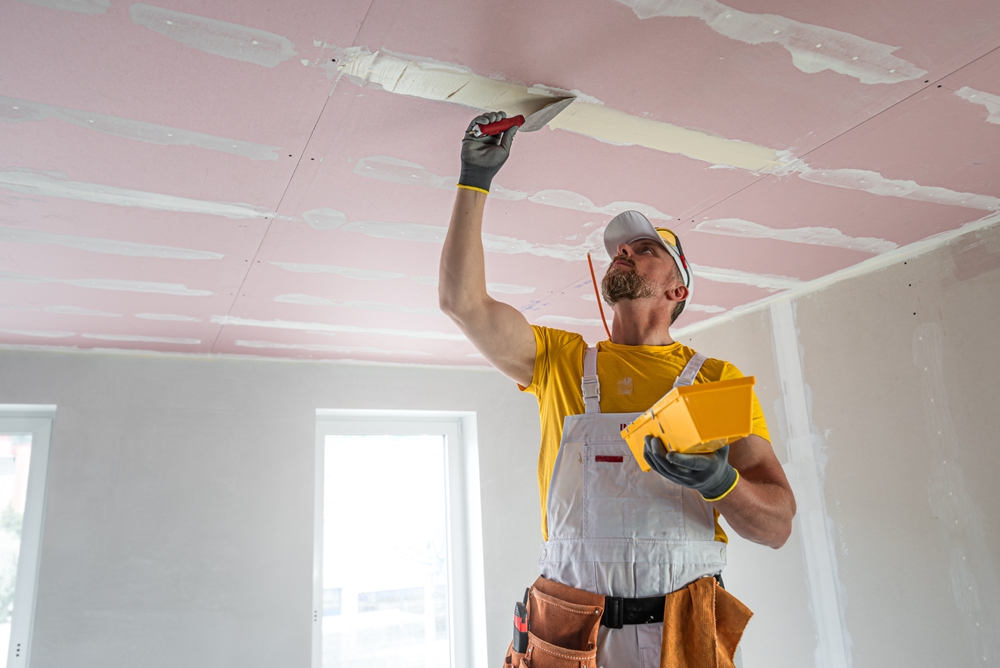America’s wealth divide affects every corner of society. From the neighborhoods we live in to the schools our children attend, and even the lifespan we might expect, wealth inequality is a part of the fabric of our nation. It’s not just about the money—it’s about opportunity, influence, and access. For a deeper understanding, we’ve gathered 13 insights into the wealth gap in America to help you navigate this complex issue with a sharper perspective. These aren’t just statistics to glaze over; they’re the realities influencing everyday life.
1. Top 1% Holds More Wealth Than The Bottom 90%

To grasp the scale of wealth concentration in America, consider this: the top 1% of earners control more wealth than the bottom 90% combined. This staggering statistic underscores a divide that influences everything from political power to educational opportunities. According to a report by economist Edward N. Wolff at New York University, the wealthiest 1% owned 35.5% of all private wealth in 2020. This concentration of wealth isn’t just a number—it represents a significant barrier to economic mobility for the majority. As policies and systems often favor the affluent, the gap continues to widen, creating a cycle that is hard to break.
The implications of this division are felt in various aspects of life. For instance, those at the top have greater access to influential networks and decision-making platforms. They can funnel resources into shaping policies that align with their interests, further entrenching their economic position. Meanwhile, those in the bottom 90% face hurdles in accessing quality education and healthcare, perpetuating cycles of disadvantage. The disparity isn’t just about assets—it’s about the different realities people live because of their economic standing.
2. Middle Class Is Shrinking

The American Dream is often tied to the idea of a thriving middle class, but the reality tells a different story. Over the past few decades, the middle class has been steadily shrinking, both in size and financial stability. While once encompassing the majority of Americans, it now accounts for less than half of the population. A combination of stagnant wages and increasing living costs has squeezed this crucial segment of society. This shift affects not only those within it but also the broader economic and social landscape.
As the middle class contracts, its ability to serve as a stabilizing economic force weakens. Without a broad and financially secure middle class, consumer spending—the backbone of the economy—faces potential volatility. Moreover, the erosion of middle-class wealth limits social mobility, making it harder for people to improve their standard of living. The decline is not just a statistic; it is a change that impacts how Americans perceive their future and their children’s prospects. Policymakers face mounting pressure to address these challenges to restore balance and opportunity.
3. Wage Stagnation Amid Rising Costs

Despite growing costs of living, wages for most Americans have remained frustratingly stagnant. According to the Economic Policy Institute, real wages have barely budged since the 1970s, failing to keep pace with the increasing costs of housing, healthcare, and education. This stagnation means that even as people work longer hours or take on additional jobs, they struggle to make ends meet. The gap between effort and reward grows, contributing to financial stress and uncertainty. For many, the promise of upward mobility feels like an elusive goal.
The issue of wage stagnation is further compounded by inflation, which erodes purchasing power over time. As expenses rise without a corresponding increase in income, people are forced to make difficult choices about their spending. This financial strain limits opportunities for savings and investments, which are crucial for building wealth over time. Additionally, this stagnation contributes to a feeling of economic insecurity, as unexpected expenses or emergencies can quickly derail financial stability. Addressing wage stagnation is essential for fostering a more equitable economic environment.
4. Educational Access And Debt Disparities

Educational attainment is often seen as a pathway to economic success, yet disparities in access and rising debts tell a different story. While education can indeed open doors, the ability to afford it is increasingly divided along lines of wealth. Students from lower-income families often face significant barriers in accessing quality education or are burdened by substantial debt. These financial challenges can limit their options and potential for upward mobility. The education system, intended as an equalizer, sometimes perpetuates existing inequalities.
The issue is multifaceted, involving not just the cost of tuition but also the hidden expenses that come with pursuing higher education. Housing, books, and other fees can add up, creating a financial strain that weighs heavily on students and their families. Additionally, the burden of student loans can linger for years, affecting life choices long after graduation. Those from wealthier backgrounds often have the advantage of support systems that mitigate these financial pressures. Ensuring equal access to education and reducing debt burdens are crucial for leveling the playing field.
5. Homeownership: A Widening Gap

Homeownership has long been a cornerstone of the American Dream, but it’s increasingly out of reach for many. The gap between homeowners and renters is widening, with significant implications for wealth accumulation. According to a study by the Urban Institute, homeownership rates for millennials are 8 percentage points lower than those of previous generations at the same age. This delay is attributed to rising housing costs, stricter lending criteria, and economic instability. The result is a generation facing challenges in building equity and long-term financial security.
For those who do own their homes, property values can significantly enhance wealth, creating a financial buffer against uncertainty. However, for those locked out of homeownership, the inability to build equity means missing out on one of the primary means of wealth accumulation. Renters often find themselves spending a larger proportion of their income on housing, with less ability to save or invest. The disparity in homeownership rates perpetuates economic inequality and affects the overall economic landscape. Addressing this issue requires innovative policy solutions and a commitment to affordable housing initiatives.
6. Health Disparities Linked To Wealth

The connection between wealth and health is becoming increasingly apparent, with implications for longevity and quality of life. Wealthier people often have better access to healthcare, nutritious food, and safe living environments. This access contributes to longer life expectancies and reduced incidences of chronic diseases. Conversely, those with fewer financial resources may struggle to afford healthcare, leading to delayed treatments and worse health outcomes. The cycle of inequality extends beyond economics, affecting physical well-being and life prospects.
Environmental factors and stressors also play a role in this health divide. People in lower-income neighborhoods might face greater exposure to pollution and limited access to recreational facilities. The stress of financial instability further exacerbates health issues, contributing to a higher prevalence of mental health conditions. Addressing these disparities requires a holistic approach that considers both economic and health policies. By reducing barriers to healthcare access and improving living conditions, it is possible to create a healthier society for all.
7. The Growing Influence Of Generational Wealth

Generational wealth is increasingly shaping the economic fortunes of people in America, often creating disparities right from birth. A study by the Brookings Institution reveals that wealth inequality is transmitted across generations, solidifying the advantages of those who inherit assets. This intergenerational transfer of wealth perpetuates economic advantages and disadvantages, affecting educational access, career opportunities, and financial stability. For those without such inheritances, the path to wealth accumulation is considerably steeper. The influence of generational wealth raises questions about fairness and opportunity in society.
As generational wealth becomes more pronounced, it challenges the notion of a meritocratic society where hard work alone can lead to success. This inherited advantage means that children of wealthy families often start with a financial head start, easing their path through education and into lucrative careers. Conversely, those from less wealthy backgrounds may find themselves burdened with debt and limited opportunities. The societal implications of this divide are significant, as it affects social mobility and economic diversity. Addressing the impact of generational wealth requires policies aimed at leveling the playing field.
8. The Role Of Tax Policies

Tax policies play a critical role in shaping wealth distribution, often favoring the affluent. The complexity of tax codes and the availability of loopholes allow the wealthy to minimize their tax burdens. This advantage contrasts sharply with the experience of middle- and lower-income people, who often shoulder a disproportionate share of the tax load relative to their earnings. These policies can exacerbate wealth inequality, making it more difficult for those at the lower end of the spectrum to improve their financial situation. Reforming tax policies is essential for creating a more equitable economic landscape.
The debate around tax reform often centers on fairness and the balance between revenue generation and economic growth. Advocates for progressive taxation argue that higher earners should contribute a larger share to support public services and infrastructure. Conversely, opponents often claim that high taxes can discourage investment and economic activity. Navigating this complex issue requires balancing these competing interests to foster economic growth while ensuring that the tax system does not disproportionately disadvantage the less wealthy. Comprehensive tax reform has the potential to significantly impact wealth distribution and economic equality.
9. Gender And Wealth Inequalities

Wealth inequality is further complicated by gender disparities that impact economic opportunities and outcomes. Women, on average, earn less than men, a gap that persists across industries and occupations. This income disparity limits women’s ability to save and invest, affecting their long-term wealth accumulation. Additionally, women often face career interruptions due to caregiving responsibilities, further impacting their earning potential. The intersection of gender and wealth inequality highlights the need for targeted policies that address both income and structural barriers to equality.
Efforts to close the gender wealth gap must consider both systemic and individual factors. Policies promoting pay equity and work-life balance can help level the playing field in the workplace. Additionally, supporting women’s entrepreneurship and access to financial services can empower women economically. The impact of these efforts extends beyond individual wealth, influencing broader economic health and social well-being. Creating an equitable economic environment requires addressing the unique challenges women face in wealth accumulation and career advancement.
10. The Digital Divide And Economic Disparity

In the digital age, access to technology and the internet has become a crucial factor in economic opportunity. The digital divide—disparities in access to technology—exacerbates existing economic inequalities. Those without reliable internet access face significant barriers in education, employment, and social participation. This divide is often along lines of wealth, with lower-income communities having less access to the digital tools that facilitate success in today’s world. Bridging the digital divide is essential for ensuring equitable access to opportunity.
The implications of the digital divide are far-reaching, affecting everything from educational attainment to job prospects. As more aspects of life move online, digital literacy and access become intertwined with economic mobility. Students without internet access struggle to keep up with their peers, while adults may miss out on job opportunities that require digital skills. Addressing this divide requires investment in infrastructure and education to ensure that everyone can participate fully in the digital economy. By closing the gap, it is possible to unlock opportunities and drive economic growth.
11. The Impact Of Globalization

Globalization has reshaped economic landscapes, creating winners and losers across the wealth spectrum. On one hand, it has opened markets and created opportunities for businesses to expand and thrive. On the other hand, it has led to job displacement and wage suppression in certain sectors, disproportionately affecting lower-income people. The benefits of globalization are often unevenly distributed, with wealthier people and companies reaping the majority of rewards. Understanding its impact is crucial for developing policies that mitigate its negative effects.
The economic shifts brought by globalization have contributed to growing wealth disparities. As companies seek to maximize profits, they often relocate jobs to countries with lower labor costs, impacting domestic employment. This shift not only affects those directly displaced but also exerts downward pressure on wages in affected industries. The challenge lies in balancing the benefits of globalization with the needs of the domestic workforce. Through strategic policy interventions, it is possible to harness globalization’s benefits while minimizing its detrimental effects on wealth distribution.
12. Philanthropy And The Wealth Gap

Philanthropy is often seen as a means for the wealthy to give back, yet its role in addressing wealth inequality is complex. While charitable donations can provide crucial support for various causes, they do not fundamentally alter the structures that create economic disparities. In some cases, philanthropy can even reinforce the status quo, as wealthy donors influence the priorities of charitable organizations. This dynamic raises questions about the effectiveness of philanthropy in addressing systemic inequality. For meaningful change, it is essential to consider both the potential and limitations of charitable giving.
The influence of wealthy donors in philanthropy can shape the focus and approach of charitable efforts. This influence can lead to priorities that align more closely with the interests of donors than with broader societal needs. While philanthropy can address immediate needs, it is not a substitute for systemic change that addresses the root causes of wealth inequality. To foster long-term solutions, it is important to complement philanthropic efforts with policy changes that address structural disparities. Only through a combination of immediate aid and systemic reform can true progress be made.
13. Climate Change And Economic Inequality

Climate change presents a significant challenge that intersects with issues of wealth and inequality. Those with fewer resources are often the most vulnerable to its impacts, lacking the means to adapt or recover from climate-related events. Wealthier communities can invest in resilience measures, while poorer communities face greater risks from environmental degradation and natural disasters. The inequality of climate change impacts highlights the need for equitable environmental policies that consider the disproportionate burden on lower-income communities. Addressing these challenges requires integrating climate action with economic justice.
The economic effects of climate change can exacerbate existing wealth disparities. As extreme weather events become more frequent, the financial strain on affected communities grows. Recovery from these events requires resources that are often lacking in lower-income areas, leading to cycles of poverty and vulnerability. Additionally, policies aimed at addressing climate change can have differential impacts on various economic groups. Ensuring that climate action is equitable involves designing policies that protect vulnerable communities and provide them with the resources needed to adapt and thrive.
This article is for informational purposes only and should not be construed as financial advice. Consult a financial professional before making investment or other financial decisions. The author and publisher make no warranties of any kind.








